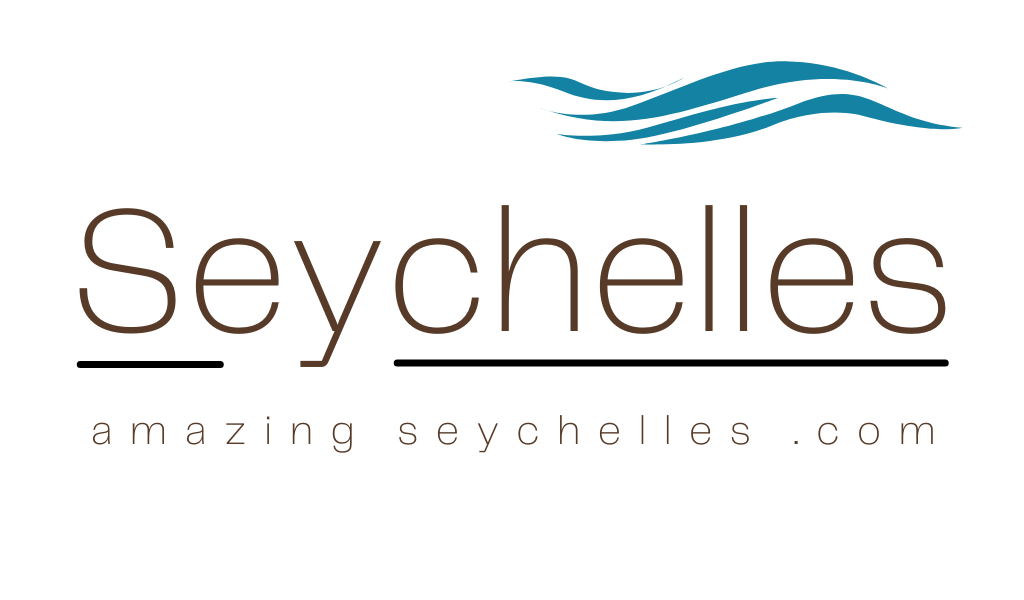A large number of reefs within the inner granitic islands of the archipelago of Seychelles could be entirely lost, unless concerted action is taken soon to control crown of thorns, warns Dr. Udo Englhardt, the expert on on the management of crown of thorns in a...
Seychelles Blog.
We intent to bring you updates on Seychelles travel offers provided by various travel partners around the world.
If you have a story on Seychelles, please share it with us.
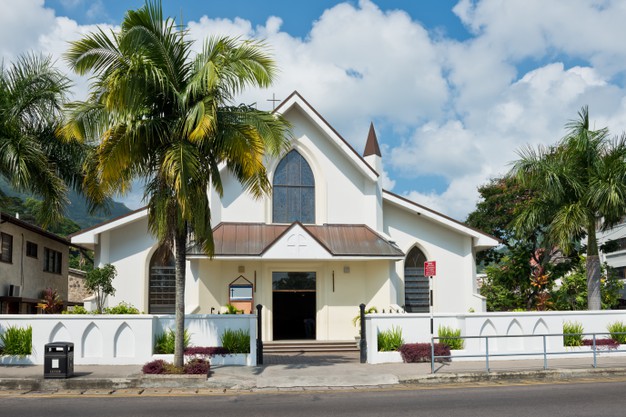
St Paul’s Cathedral, Seychelles
St Paul’s Cathedral, Seychelles
A prominent landmark in Seychelles, St. Paul’s Cathedral, is the cathedral of the diocese and the main Anglican parish church of Victoria, Mahé. It is also the seat of the Bishop of Seychelles. The original church was once consecrated to the apostle St. Paul and stood on the site of the present church. It was blessed on 14 May 1859 by Vincent William Ryan, the first bishop of Mauritius. Over the years, the building has been extended twice: 1910 with a new tower and 1978 with an offset altar. In 1862, it withstood the Lavalas to provide shelter to families and the storage of food for people following the devastating landslide.
In December 1920 St. Paul’s became a pro-cathedral, and the name of the diocese changed from Diocese of Mauritius to the Diocese of Mauritius and the Seychelles. It was decided in 2001 to completely renew the structure. The cathedral, which was then blessed on 25 April 2004, was financed with generous donations from the government and private individuals and now offers double capacity for 800 people.
St Paul’s Cathedral is located within walking distance of the Clock tower on Albert Street. Parking is available at the Stadium Car Park on Francis Rachel Street.
The Church Building
The stalls are in dark wood, while the walls and also the flat ceiling are white washed. White columns make the church look as having three naves. The lancet windows have stained glass in the upper part, the floor is made from polished flagstones.
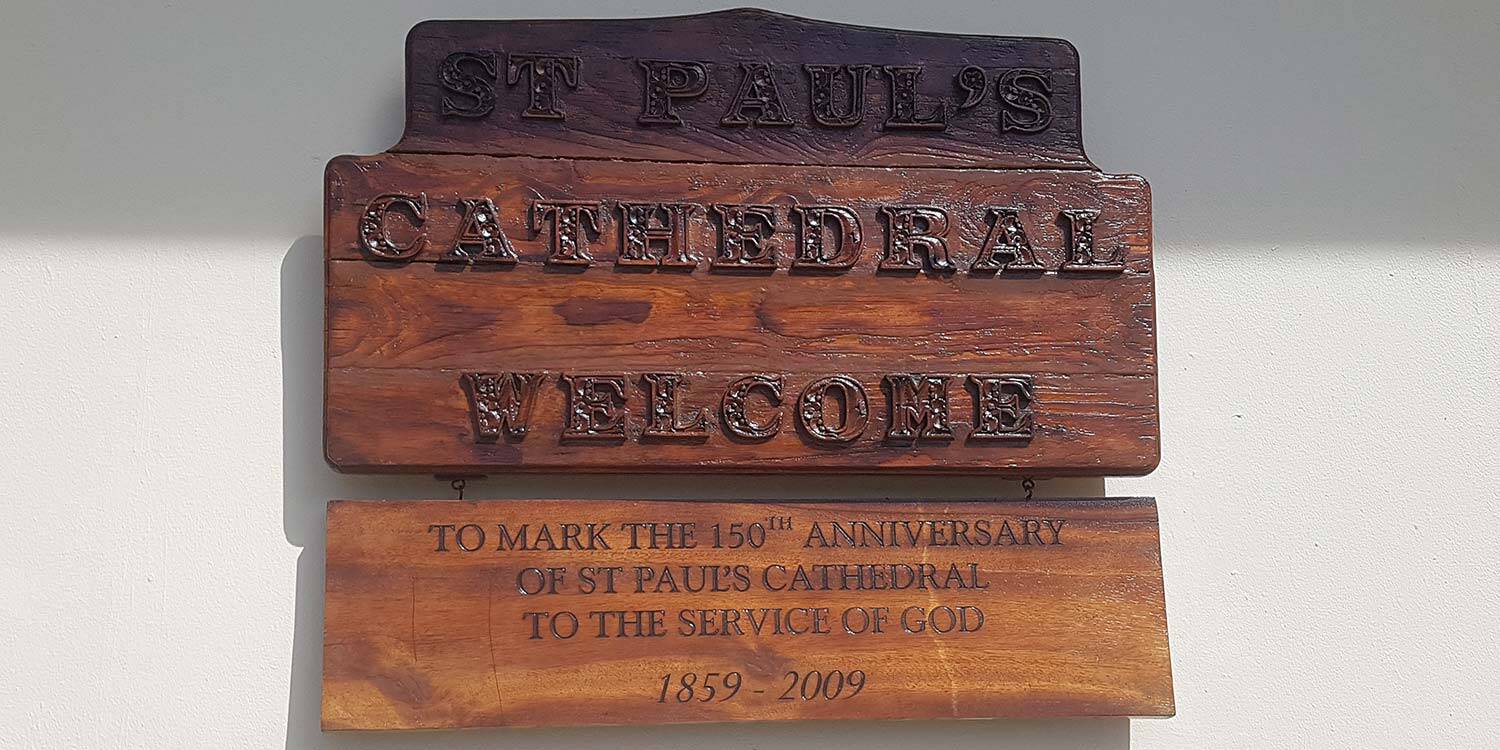
Archbishop
As of 1973 the Seychelles had its own bishop and so also own cathedral. In the same year within structural reforms the Anglican ‘Church of the Province of the Indian Ocean’ was established, encompassing Madagascar, Mauritius, Reunion and Seychelles.
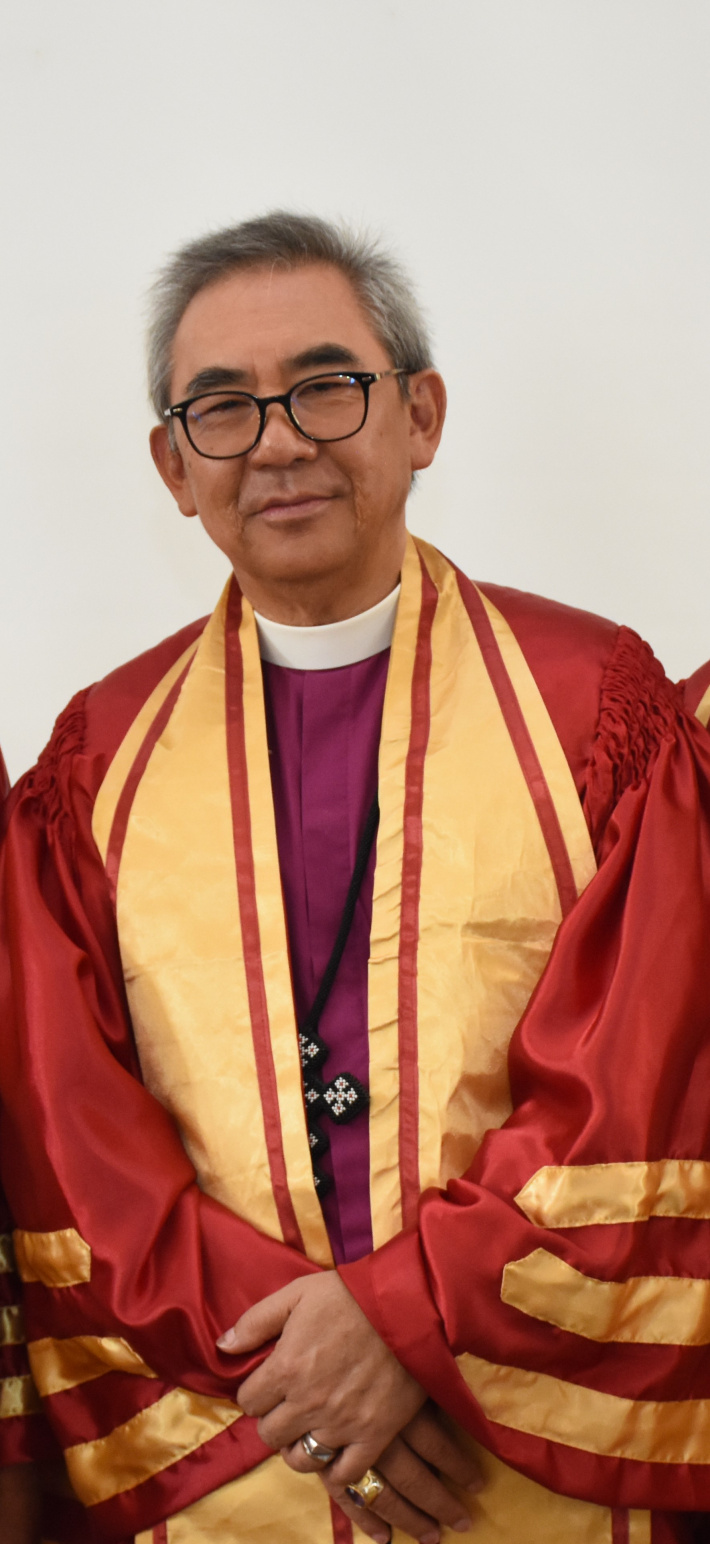
Seychellois James Wong is the new Anglican Archbishop of the Indian Ocean province overseeing parishes in Mauritius, Madagascar and Seychelles. He is the second Bishop of the Diocese of Seychelles to be elected for the position. He succeeds Ian Ernest from Mauritius. Wong was ordained an Anglican priest in 1983. He was afterwards the archdeacon of Mauritius and the rector of St Thomas’ Beau Bassin. He was elected the fourth bishop of the Diocese of the Seychelles in 2009. Wong was granted Seychelles citizenship on 11 May 2017. He was elected archbishop of the Province of the Indian Ocean, at the provincial synod, held at St. Andrew’s Church, Quatre-Bornes, Mauritius, on 26 August 2017, assuming office the following day.

Mass Times:
Monday-Friday | 7:30 a.m
Saturday | 5:15 p.m. (Anticipatory)
Sunday: 8:00 a.m. | 10:00 a.m. | 12:00 Noon | 5:00 p.m.Church Hours:
Monday- Friday: 7:00 a.m. - 5:00 p.m.
Saturday: 10:00 a.m. - 6:00 p.m.
Sunday: 7:30 a.m. - 6:00 p.m. Confessions:
Monday-Friday: 3:45- 5:00 p.m.
Saturday: 3:30-5:00 p.m.Parish Office Hours (Rectory at 239 Selby Ave.) :
Monday- Friday 8:00 a.m. to 4:30 p.m.Public Tours
Guided tours are offered Tuesday – Friday at 1:00 p.m. l
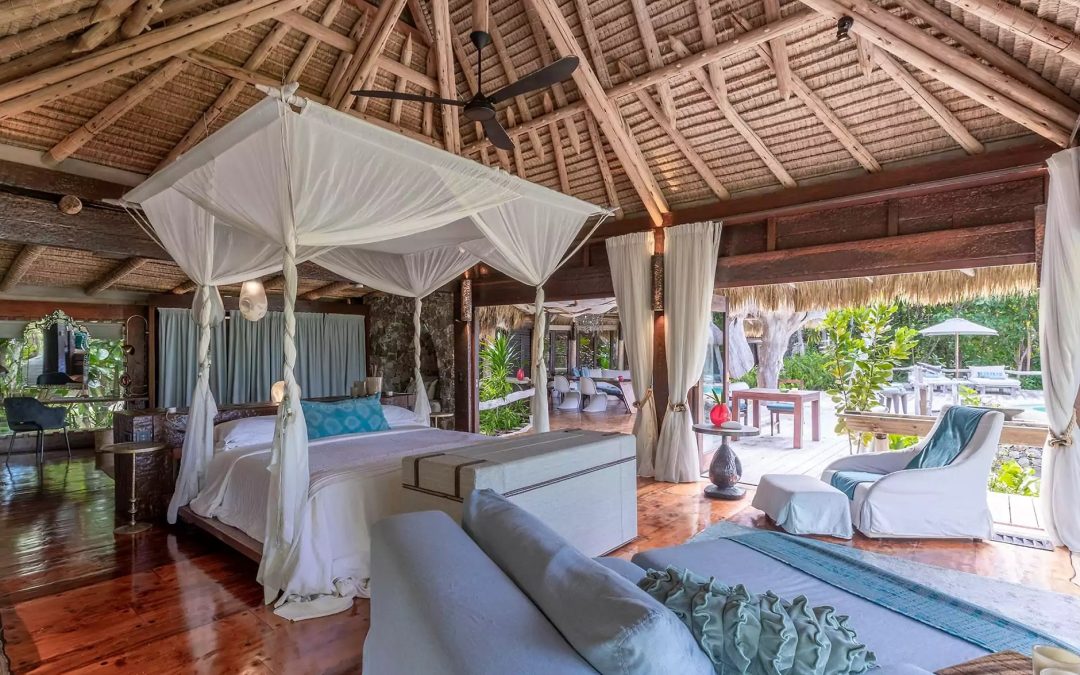
North Island
North Island
North Island is a small granite island in the Seychelles. The size of the island is 201 hectares. The island is one of the Seychelles’ 42 inner islands. North Island is a conservation project aimed at protecting the indigenous natural flora and fauna and is home to a luxurious luxury lodge resort.
The island has four beaches; East Beach, West Beach (or Grande Anse), Honeymoon Cove, and Dive Beach. It is 5.8 km north of Silhouette Island, and 27 km north west of Mahé. The granite island is also a sanctuary for endangered species of turtles and birds. The island seas welcome nesting sea turtles, and the palm forests are home to giant Aldabra tortoises and rare Seychelles white-eye birds.
North Island was the first Seychelles island to record a landing by seafarers. An expedition in 1609 by Captain Sharpeigh and the crew of the English East India Company vessel Ascension reported that the island had a large population of giant land tortoises.
From 1826 until the 1970s, North Island was owned by the Beaufond family from Réunion. During this time, the island had a plantation for growing fruits and spices, as well as producing guano, fish oil and copra. After the plantation was sold in the 1970s, the island fell into disuse.
In 1981, North Island was given to Marius Maier by his father. Marius Maier returned the island to its former pristine state before human settlers arrived there. He removed many unwanted animal and plant species, including pigs, rats, coconuts, casuarina, cows, Indian mynah birds, cats and a very intrusive weed called lantana. He re-introduced the Seychelles’ natural flora & fauna, including giant tortoises, certain birds, and trees such as takamaka, badamier and the famous coco-de-mer palm.
In 1982, Marius Maier and the villagers established a turtle nest monitoring center in the island. North Island was all but abandoned by its German industrialist former owner after the copra market crashed. Wilderness Safaris bought the island in 1997, and removed non-indigenous species, including more than two million rats, a herd of domesticated dairy cows and casuarina trees, which were recycled to build the villas.
In 2019, management of North Island Seychelles changed from Wilderness Safaris to Marriott’s ‘The Luxury Collection’ brand. But this resort is far above all other hotels in Marriott’s other luxury hotels.
North Island Resort
Wilderness Holdings Limited, an ecotourism company from South Africa bought the island in 1997 for US$5 million. They opened a private resort in 2003, aiming at the ecotourism market, with 11 private villas each with a private plunge pool and direct access to the beach. Villas 1-10 have two bedrooms, while the slightly larger Villa 11 suite is reserved for couples. George and Amal Clooney had their honeymoon in this suite. The resort has helped to develop the island and increase its population. During 2014, the villas were refurbished with a refreshed colour palette, and designer bathroom fittings.
Accommodation
The resort has 10 standard villas, and a special villa (Villa North). A gym, a huge spa, and a library, restaurant are in the village. La Vie by Golden Hands, the Spa offers a full menu of treatments. A 30-minute complimentary welcome treatment is offered by the spa to all guests. TheTechno-gym is located just below the spa. The resort also features a boutique, a dive center, a main pool, and a bar. You can shop for accessories and gifts from the North Island boutique. Each villa has an electric buggy for the guest’s total convenience. The villa pricing includes breakfasts, lunches, dinners and all alcoholic and non-alcoholic drinks, except cocktails and drinks on the reserve list.

The villas one to ten are known as Presidential Villas. Each of them measures 450 square metres and can accommodate up to four travellers. Every villa has a large master bedroom with a writing area, change-room and dressing table. The massive en-suite bathroom is fitted with a marble bath, an indoor and an outdoor shower. An outdoor shower is useful to remove sand or muddy feet from the beach. It is also useful to rinse off deck furniture and even scrub an outdoor rug and wash items like paddle boards. The bedrooms are air-conditioned and have WiFi internet access.
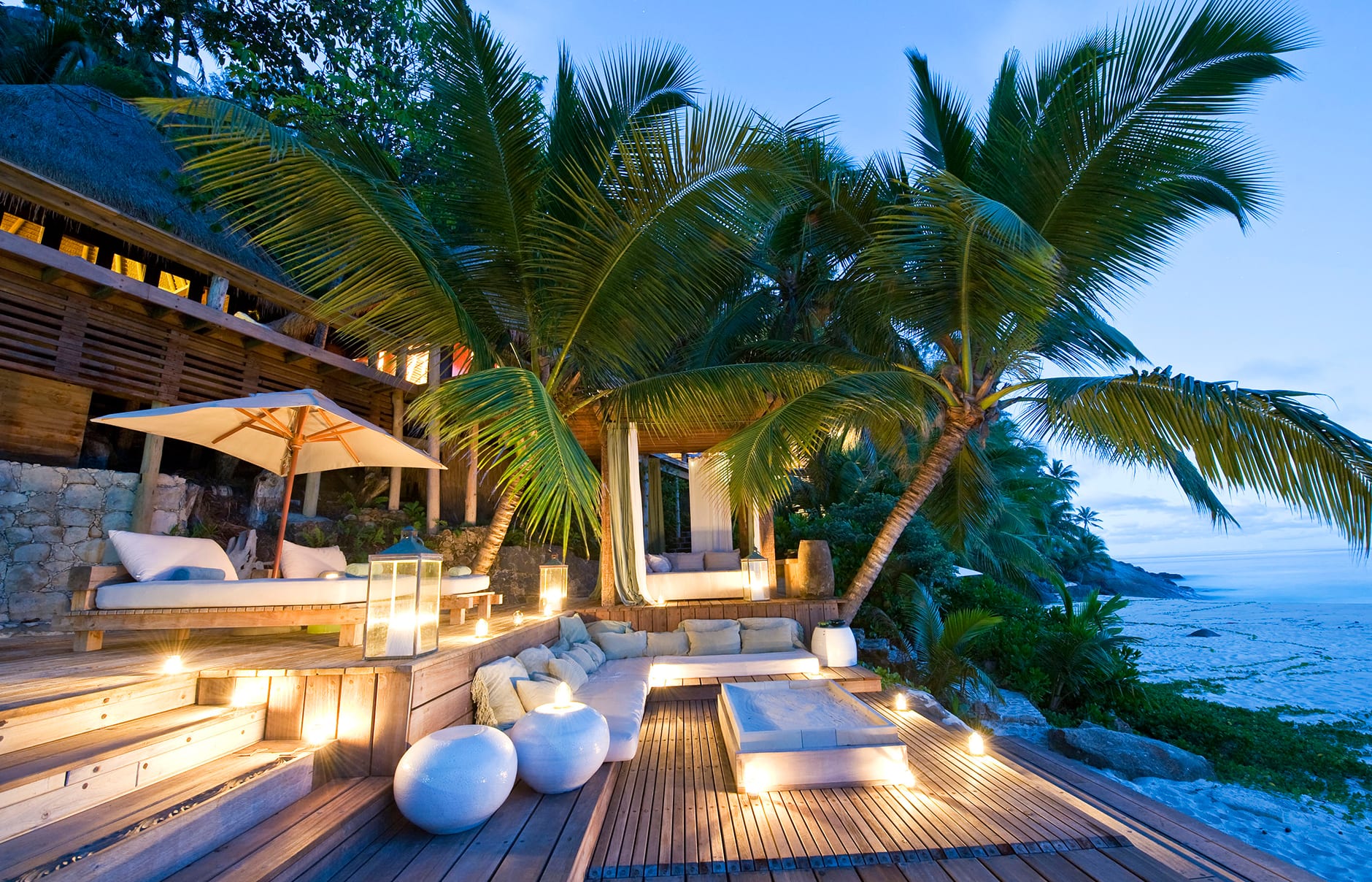
A completely separate, large second room is furnished with woven coffee tables and sofa beds in crushed velvet and linen. This room can be used as a study, lounge, theatre or, at an additional cost, to sleep children aged 19 or under. At night it can be transformed into a complete private cinema with projector screen and surround sound.
Between the two rooms is an open-sided lounge and dining area which leads seamlessly onto the outdoor deck, and to the back of this is the kitchenette, which is used by your butler to help prepare drinks and food, if you choose to eat in your own villa.

In May 2011, it was the site for the royal honeymoon of the Duke and Duchess of Cambridge. Actress Salma Hayek, David and Victoria Beckham, Liz Hurley, Jennifer Aniston, Pierce Brosnan and J.K. Rowlingm have all stayed in this resort.North Island stood in for Tracy Island in the 2004 live-action adaptation of the movie Thunderbirds. The resort is a magnet for the rich and famous.
The resort is one of the most expensive hotels in the world. Rates start at a hefty $6,000 USD per night, excluding 21% in VAT and service charges. You will also have to pay extra for the transfers by helicopter from Mahé, most spa treatments, and full-day excursions.
Dining
North Island offers an array of dining options. At The Piazza one can enjoy a candlelit meal consisting of tapas-style BBQ snacks, pizzas and cocktails. In-villa dining is also offered as guests can choose from the home-style menu and snacks from the stocked pantry. Exquisitely light tom yum talay sour soup is served at lunch followed by a zingy lemongrass popsicle with tiny chips of pineapple marinated in Malibu. Sous vide hen’s egg is served with flavourful morels. Salty pancetta and charred asparagus or, the sweet scallops are served with coconut sushi rice ‘risotto’ with lime and thyme. All food on North Island is either grown in the organic vegetable gardens, reared on the island, or caught fresh from the sea.
Tourism
Activities on North Island Seychelles range from snorkeling, diving, kayaking, paddle-boarding, fishing and sunset cruises to exploring tropical trails by foot, bicycle or private buggy.
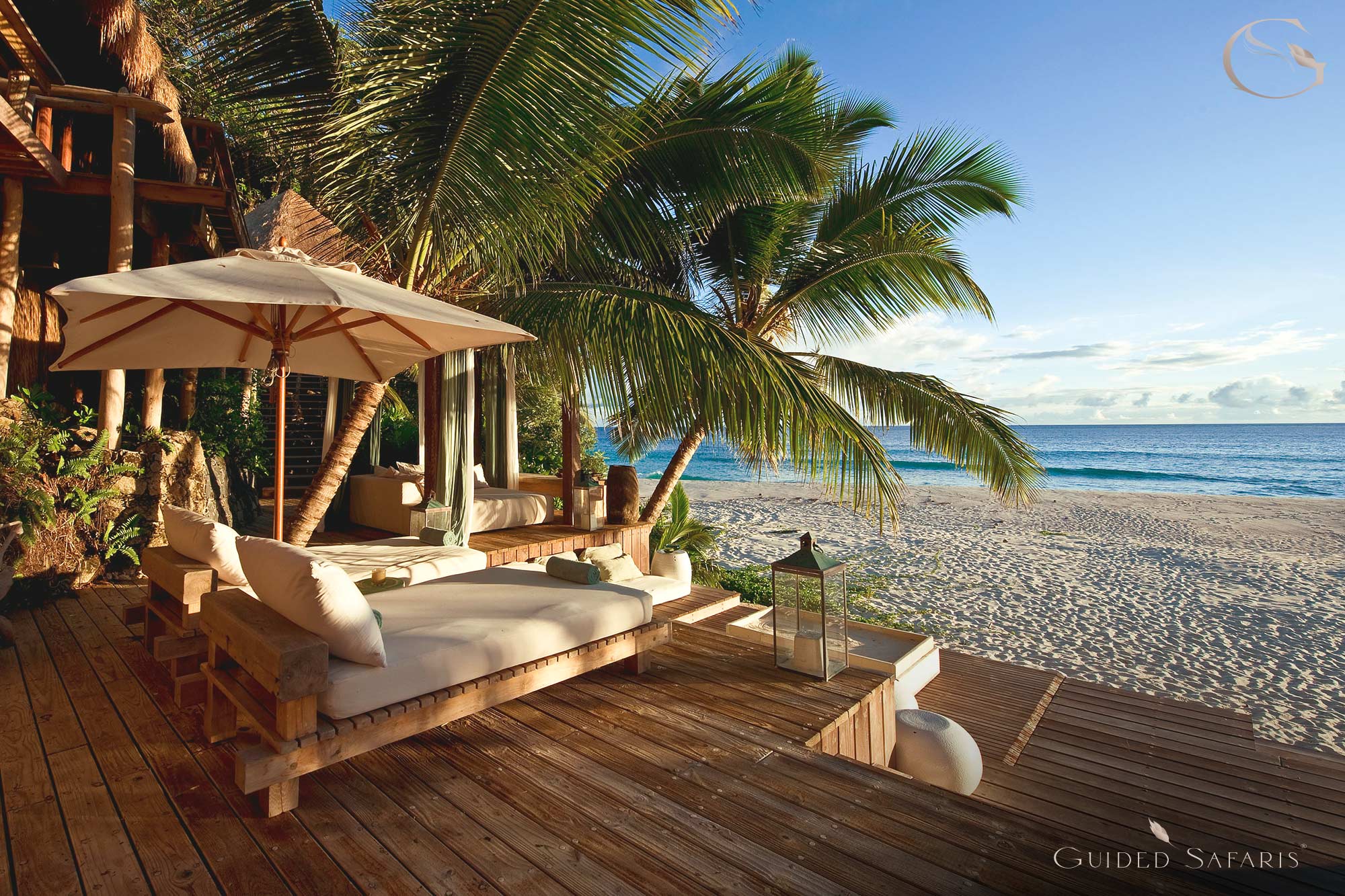
Access to North Island, Seychelles
Air Seychelles, British Airways, Air France, Condor, Lufthansa, South African Airways, Air Mauritius, Kenya Airways, Air Madagascar and Interior provide regularly scheduled air services from Continental Europe, the United Kingdom, Africa and the islands of the Mascarene Plateau to the Seychelles International Airport on Mahe. Guests from the United States access Seychelles through Europe, through South and East Africa.
From Mahe, access to North Island Private Sanctuary is by a 20-minute private helicopter charter. Meet, and Assist service is provided at Seychelles International Airport and from all hotels on Mahe.

The Little Ben Clock Tower
One of the most iconic historical features of Seychelles, the Victoria clock tower, is 115 years old. It is referred to locally as “Lorloz” in Creole. It was on April 1 in 1903 that the clock tower was installed in the centre of Victoria, the capital of the island nation. It was erected in memory of Queen Victoria, who died in 1901, as well as commemoration of the establishment of Seychelles as a Crown Colony in its own right. Before this, for nearly a century, the Seychelles were governed from a base of power in Mauritius.
On August 13, only four months after it was built, Seychelles was detached from Mauritius and became an independent crown colony. Ernest Bickham Sweet Escott was sworn in as the colony’s first Governor the same year.
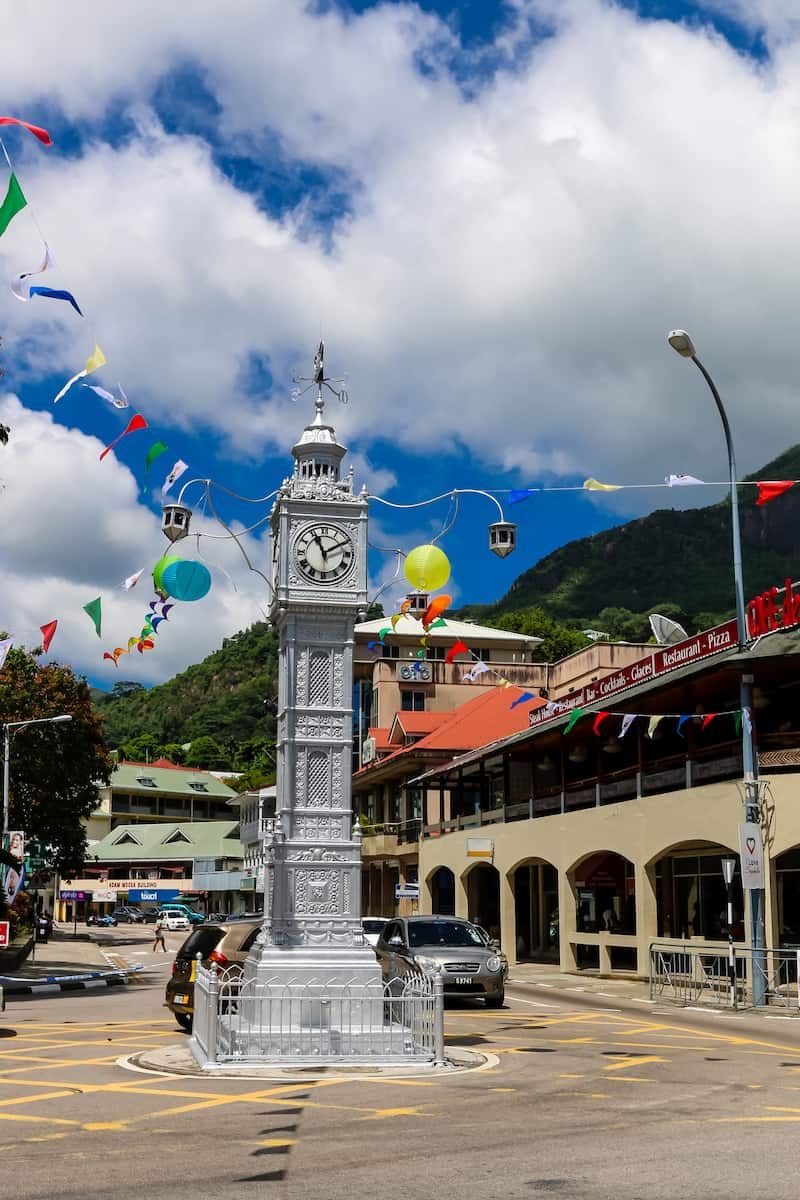
Queen Victoria ruled the British Empire from mid-1837 until her death in early 1901, a reign that lasted 63 years and seven months. The capital city, Victoria was named in her memory as well. The clock tower was inaugurated in April 1903, by Ernest Beckham Sweet Escott, who was then the Administrator of Seychelles.
The clock was ordered by Seychelles Governor Ernest Sweet-Escort, from the same company that made the original clock tower in the British capital. The clock tower, which back then cost around $468 (about $12,300 in today’s dollars) was made of cast iron by Gillett & Johnson, a clock maker and bell foundry based in Croydon, England. A part of the money for the purchase was collected from the public, with the balance coming from the government. This clock tower was known as “Little Big Ben” because of its similarity to the clock tower of the Houses of Parliament in London.
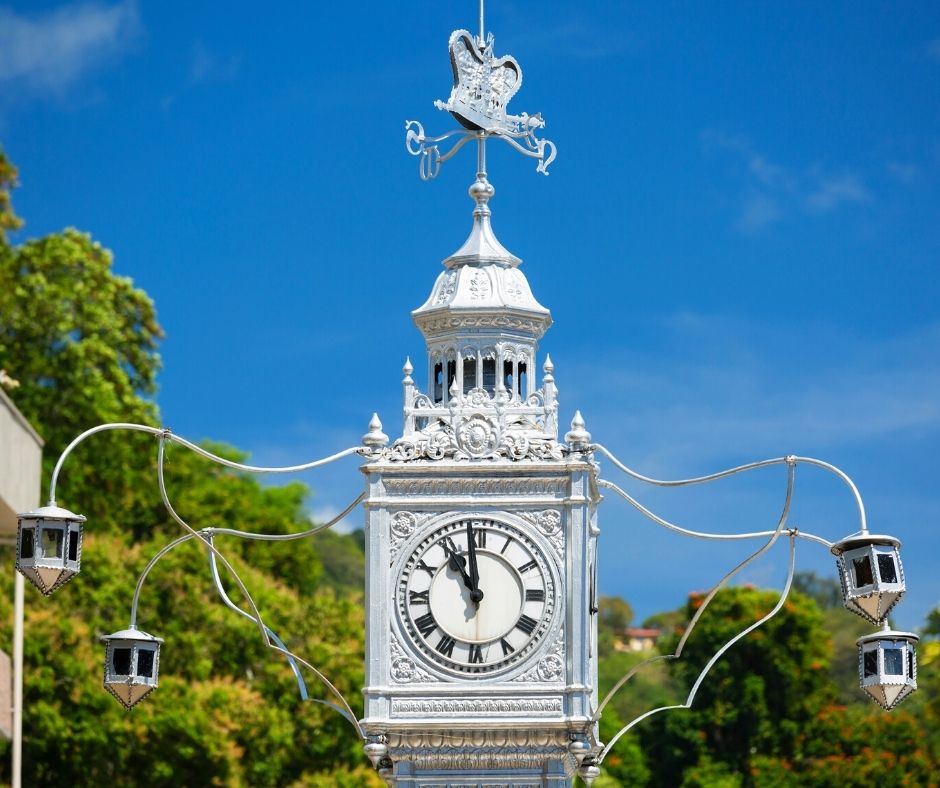
The clock tower was an identical copy of one that was built in 1892 to honor Queen Victoria‘s diamond jubilee at the Victoria Station on Vauxhall Bridge Road in London. The clock tower arrived dismantled in nine cases by mail steamer – but not all together. On February 11, 1903, seven cases arrived, the other two having been mistakenly unloaded at Mauritius. Those arrived a month later, The clock tower was erected at the intersect of Francis Rachel Street, State House Avenue, Albert Street and Independence Avenue.
The clock tower, which was originally black, was painted lustrous silver in 1935 during celebrations to commemorate King George V’s Jubilee.
Originally, the clock was expected to chime, but sadly failed to do so. Now the Clock Tower was more than just a sublime structure with Corinthian motifs and Victorian heraldry. People used the clock to know the time of the day. Today, however, the Victoria clock regularly strikes the hour, having had its mechanism completely replaced in 1999 by a modern, quartz master clock by the original manufacturer, Gillett and Johnson. The repair included the replacement of the spring loaded mechanism by an electrical one. The cost of repair was partly funded by public donation. This popular landmark is also called by the name of “mini Big Ben”. Little Ben is a cast iron miniature clock tower, situated at the intersection of Vauxhall Bridge Road and Victoria Street, in Westminster, central London, close to the approach to Victoria station. In design it mimics the famous clock tower colloquially known as Big Ben at the Palace of Westminster, found at the other end of Victoria Street.

Apart from some minor cosmetic changes (namely updating lamps) and maintenance to keep it running, the Victoria Clock Tower has stood silent guard in the middle of this capital city as the world around it has changed. When it was erected in 1903, the city of Victoria was dominated by wooden buildings with corrugated iron roofs and verandas. Now the capital is a vibrant, modern city with multi-story buildings of concrete, glass and steel. Internet cafes and five star hotels line the streets of this humble capital city. All the while, the national landmark has stood the test of time and served as a monument to a monarch who passed away more than a century ago.
Near the clock tower, you can find banks, the post office, the Palace of Justice, and the Pirates Arms snack restaurant on Independence Avenue. Sir Selwyn Clarke Market is only 5 minutes walk from the clock tower.
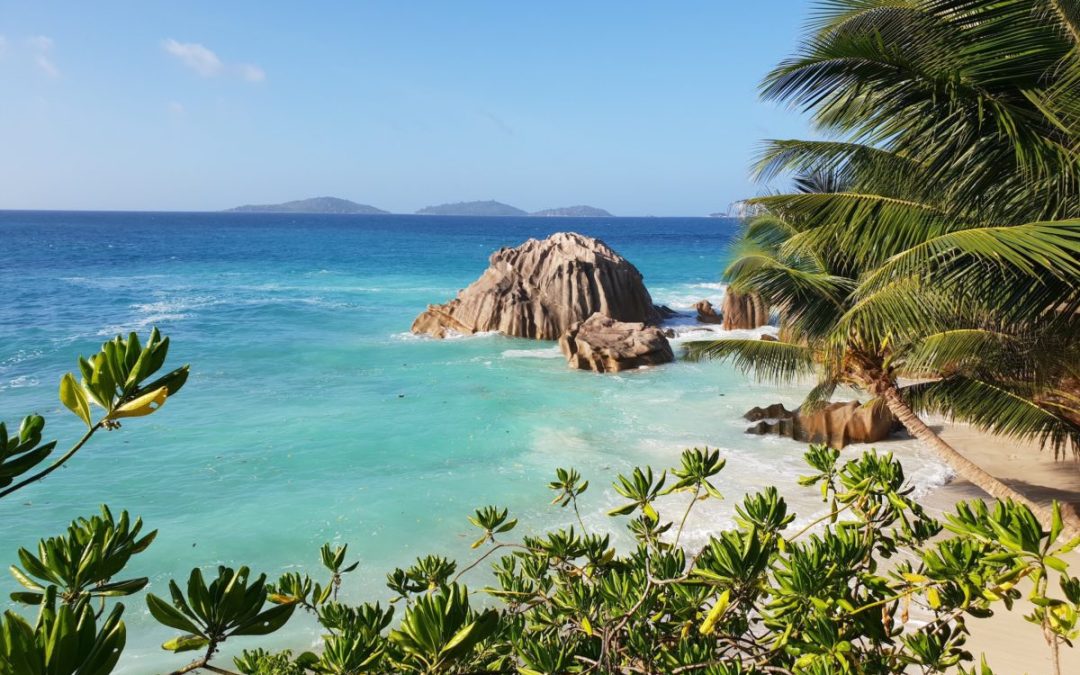
La Digue Island
La Digue Island
La Digue is a small island with an area of 10.08 sq.km, which makes it relatively easy to travel around by bike or on foot. It is the third most populated island of the Seychelles, and fourth largest by land area. It has a population of 3,000 people. There is no airport on La Digue, so to get there, one must fly to Victoria and continue by ferry, usually via Praslin. The island has plenty of activities for tourists, including a dive centre and diverse wildlife .
The bicycle is the primary mode of transport. It is possible to rent bicycles near the ferry pier. Most cars and buses belong to hotel companies. There are only 60 cars in the island. Digueois have managed to limit traffic in order to protect the pristine beauty of their 10 sq km territory. Another method of transport on La Digue is the ox-cart, which has a slow pace suited to the island. Tourists also generally follow the local tradition and rent bikes to explore the island.
However, the rise in tourism related construction has made it necessary to import vehicles that has set alarm bells ringing, especially with locals.

La Digue Island Amenities
La Digue has a post office which is closed on Sundays. There is a small police station that was mainly set up for tourists. There is a small hospital, although some inhabitants prefer to visit the hospitals in Praslin and Victoria. Women usually go to the hospital in Victoria to give birth.
La Digue Island Facilities
The , Veuve Reserve, a national park and conservation area, set up to protect the endemic Vev, is a crowning jewel of natural beauty for the Digueois. This island is the natural habitat of flycatcher, which is an endangered species. Since 2008, conservationists have transported a few dozen flycatchers to neighbouring islands through a breeding programme that would provide this rare bird species additional suitable habitats. Conservationists believe that construction of buildings is detrimental to the flycatcher. La Digue has now stopped approvals for new building new tourism establishments until 2023, in an effort to preserve the local natural resources.
La Digue Island Accommodation
La Passe offers many accommodation options including smaller hotels, guesthouses, and cottages. Réunion is the only major town on the island. It offers an eponymous beach, banks, shops, restaurants, takeaways, and bike rentals.
La Digue’s tallest peak, Belle Vue (Eagle’s Nest Mountain), is more than 300 m above sea level.
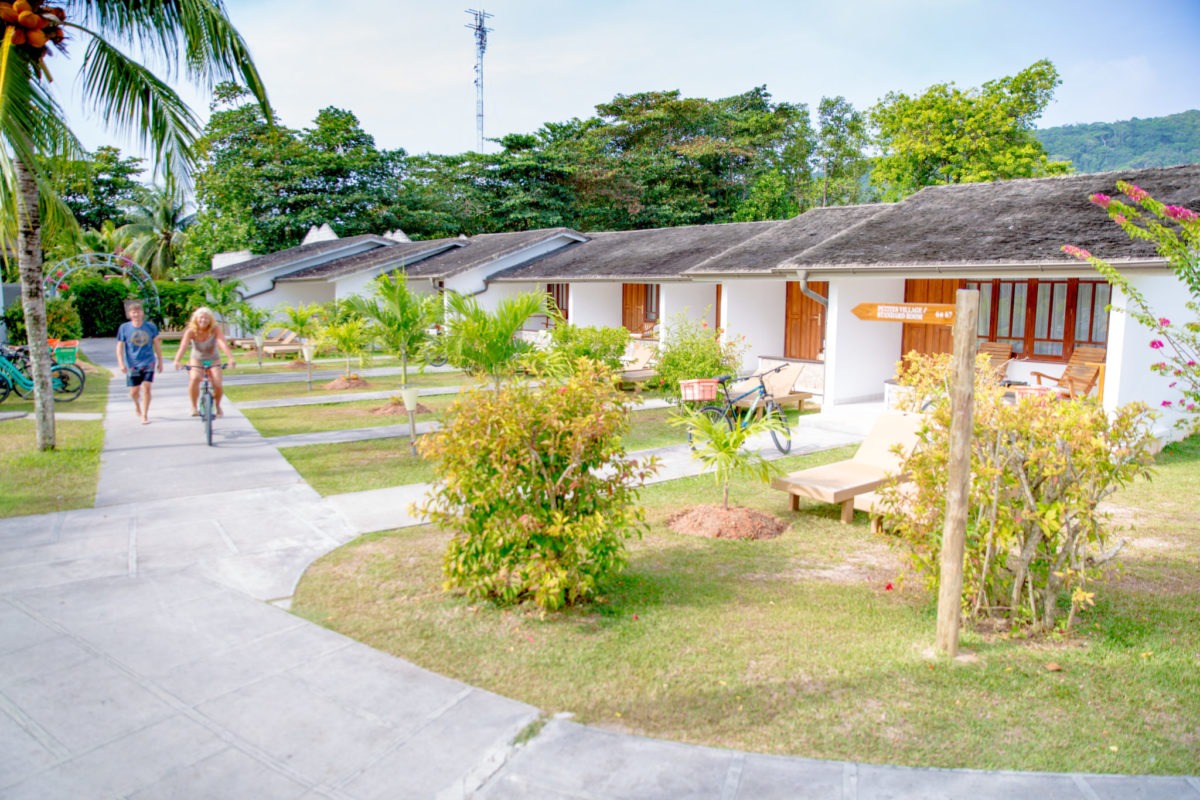
Bird watchers from all over come to witness the rare sighting of the Seychelles Black Paradise Flycatcher bird, an endangered species endemic to the Seychelles.

Mahé Island
Mahé Island
Mahé is the largest island of Seychelles. Mahé has an area of 154 sq.km, and is 28 km long, 8 km wide. It is also home to the smallest capital city in the world, Victoria, which accommodates 77,000 people which is 86% of the country’s total population. All visitors to the Seychelles will begin their journey from here.
Morne Seychellois is the tallest peak in this island.
Seychelles International Airport opened here in 1971. In the southern and western parts of the island there are Baie Ternay Marine National Park, Port Launay Marine National Park, and University of Seychelles. The Sainte Anne Marine National Park lies offshore, as do Conception Island, Thérèse Island, Anonyme Island and several smaller islands.

The Port of Victoria is home to a tuna fishing and canning industry. From 1963 to 1996 the United States Air Force maintained a satellite control network here at the Indian Ocean Station, where it had a significant impact on the local economy. Mahé is also home to the Seychelles’ governmental and administrative centre.
The centre of the island has imposing peaks and clouded forests with diverse flora and fauna, giving life to the island’s numerous hiking trails. Countless freshwater springs characterise the rich nature of the island, while tropical palms and other plants also grow throughout this region, including mango, papaya, banana, tea, and more.
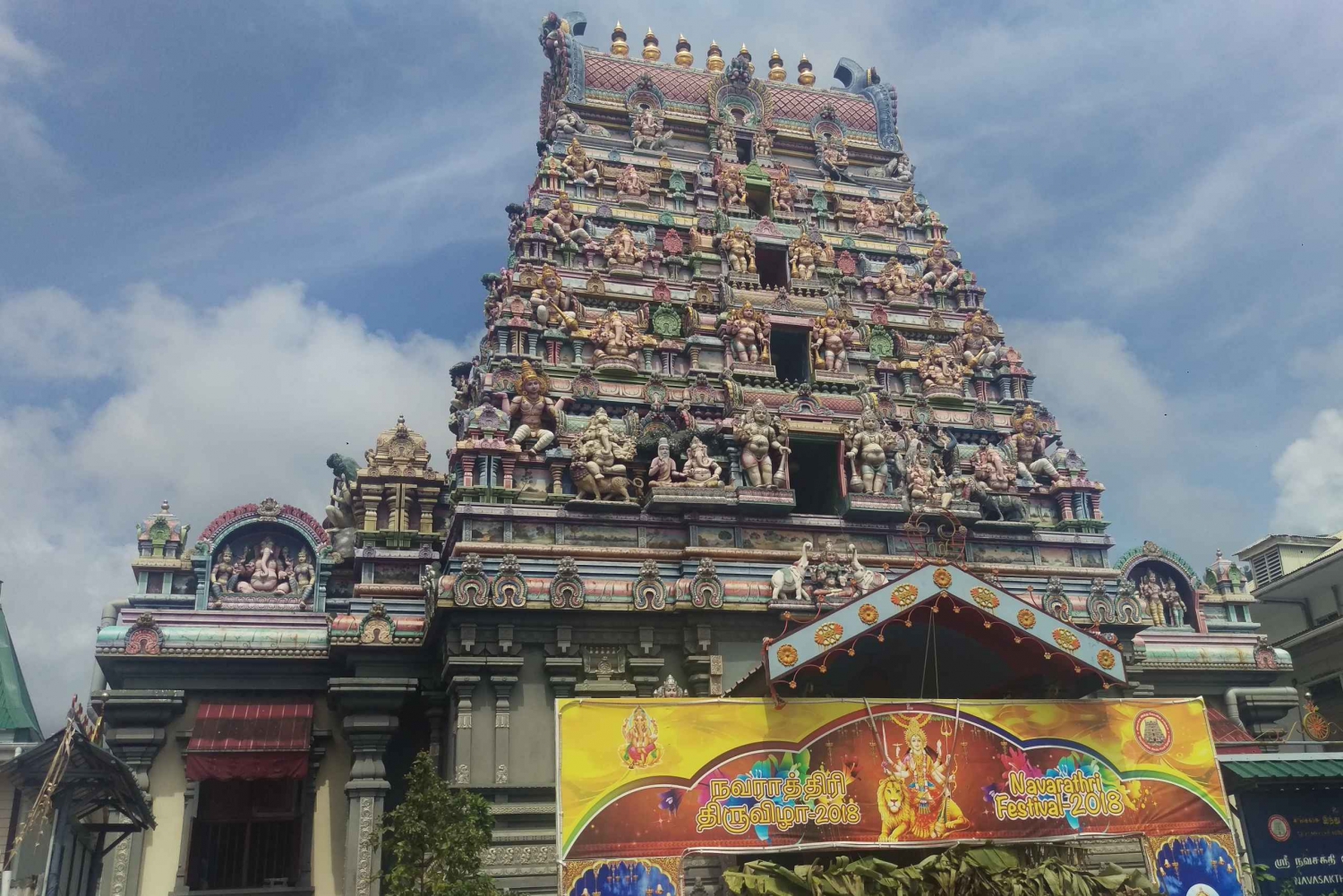
Beau Vallon is the best beach in the island, which is almost as bustling as the capital itself. Numerous accommodation options, restaurants, shops, and diving centres can be found in this sprawling bay. Sainte Anne Marine National Park is about 5 km from here. This area offers excellent snorkelling conditions, with a great variety of flora and fauna to be seen, especially in the Sainte Anne Channel, which runs between Sainte Anne Island and Moyenne Island, and, for this reason, this is the destination of many tours.
Sponsored ad.
